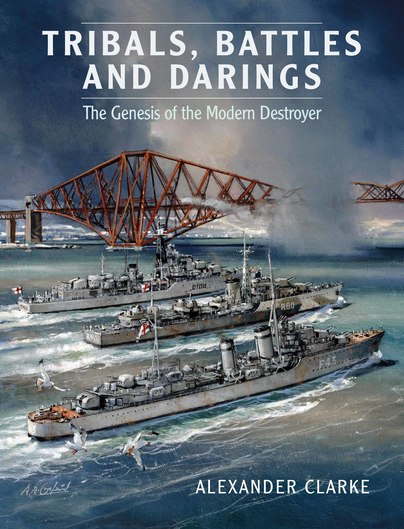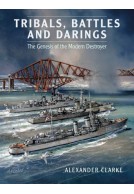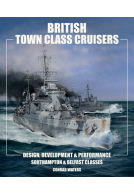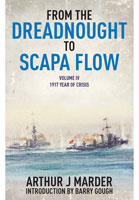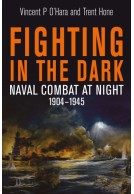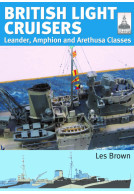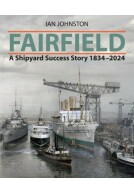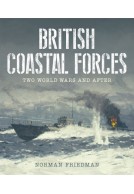Tribals, Battles & Darings (eBook)
The Genesis of the Modern Destroyer

File Size: 113.4 MB (.epub)
ISBN: 9781526772916
Published: 30th January 2022
Youtube!
Bruships 87: Books Found on My Travels, New Books & Christmas Recomendations - YouTube
Dr Alexander Clarke Does Naval History Live - Skip to 1:16:00
| Other formats available | Price |
|---|---|
| Tribals, Battles & Darings Paperback Add to Basket | £16.99 |
The ships that dominate so much of the history of the Royal Navy in the Second World War are more often than not the carriers or battleships – Ark Royal, Warspite, Hood – and rarely do ships smaller than cruisers move centre stage. Apart that is from one class, the Tribal class destroyers, heroes of the Altmark incident, of the battle of Narvik, and countless actions across all theatres of operation. Yet there has been surprisingly little written about these critical ships, still less about their wartime successors, the Battle class, or their postwar incarnations, the Daring class.
This book seeks to rectify this by describing the three classes, each designed under different circumstances along destroyer lines but to general-purpose light cruiser form, from the interwar period through to the 1950s, and the author explains the procurement process for each class in the context of the needs and technology of the times. Taken together these classes represent the genesis of the modern general-purpose destroyer, breaking from the torpedo boat destroyer form into a self-reliant, multi-purpose combatant capable of stepping up to the cruiser’s traditional peacetime patrol missions whilst also fulfilling the picket and fighting duties of the wartime light cruiser or heavy destroyer.
This is the first work to analyse these three classes side by side, to examine their conception, their creation and their operational stories, many heroic, and provide an insight into ship design, operation and culture; and in doing so the book aims to contribute a better understanding of one of the most significant periods in the Royal Navy’s history. In its clear description of the genesis of the modern destroyer, this book will give the reader a clearer picture of its future as well. Historians, professionals and enthusiasts will all enjoy this wide-ranging and detailed study.
"Impeccably researched, this book provides a wealth of both primary and secondary references for readers at all levels, especially those who want to conduct further research. Written in a very informal style, it is accessible to both the layman and the serious academic."
Nautical Research Journal Volume 68 (2023)
"This is a deeply researched and well written account of important warships accompanied by a selection of contemporary photographs and relevant statistical data."
Warships International Fleet Review, January 2024
Tribals, Battles and Darings opens a window into a period of transition for warships while offering an accessible starting place for looking at the people, events, and ships that influenced this unique period in history. It also provides a clear and straightforward examination of the final stages of the transition of the destroyer, from ships suited to a single mission, to ships that needed to perform a variety of functions in a changing world.
The Northern Mariner/Le marin du nord - Vol. 32, No. 3 (Fall 2022)
As featured in
Warship Annual - 2023
As featured on History of War
History of War
The most gripping part of the read, which in practice was the larger part of the book, was the narrative of the Tribal class at war; it was at this point that the author's undoubted passion for the subject was apparent.
The Naval Review Autumn 2022
Featured in
The Mariner's Mirror
I found this a really interesting read, with not just the stories of the actions they were involved in, but the context of the period they were designed in, balancing capability with cost. Sound familiar? These were good looking ships that gave excellent service to the Royal Navy and I learnt a lot from reading this book.
Military Model Scene
Read the full review here
A fitting tribute to the men and ships of the Royal Navy's elite destroyer forces from the 1930s to the 1960s - four mushroom heads, only missing out on five due to the esoteric nature of the subject.
Army Rumour Service (ARRSE)
Read the full review here
The narrative flows and is most readable, the photographs, of high quality, are many and varied and the whole is supported by a set of notes and a very extensive bibliography.
Clash of Steel
A super read which we highly recommend.
Read the full review here
This publication has been a pleasure to read for many differing reasons.
Bob Dean - Navy Daze, The Ton Class Association
I served in the Royal Navy during the 1950s and 60s therefore most of the ships mention are known to me either due to them still being in commission and serving on the same station as my posting or due to their well know exploits during and after WWII.
However the book isn’t just a list of ships and their exploits. He tells of their reason for being, their commanding officers and crews, their victories and sad losses, their construction, armaments, refits and so much more. Their claim to fame is legion and many commanding officers went on to become senior officers at the Admiralty as it was known in those days. Probably the most famous WWII Destroyer is HMS Cossack who entered Norwegian waters to rescue captured British Seamen from the German ship Altmark. Other destroyers carried out many non-fighting functions during their commissions. For example, recuing injured civilians during the Spanish civil war, transporting Royalty from war torn Europe, entertaining foreign dignitaries and attempting to impress foreign powers who might be contemplating trouble that could adversely affect British interests. The classes of destroyers may not have been what some senior officers wanted during the Second World War but they certainly proved their worth. To have served on these ships was something to be proud of that, with the camaraderie generated, remains to this day, and is witnessed in the Royal Navy’s small ships.
On a personal note I was pleased to see a small paragraph which told of HMS Diana acting as escort to Britain’s last battleship HMS Vanguard. I was serving on the Vanguard at this time and my elder brother on the Diana.
A very interesting and informative book highly recommended.
"The book’s emphasis on the Tribals and their wartime exploits is an interesting read."
Small Warships
Previous books have covered the Tribals and Darings in great detail, but the Battles less so. But this is the first book to examine the thinking behind the development of the three classes, and how this was influenced by the perceived operational requirements in the future. The book achieves this by looking at how the RN needed to reduce costs but keep a sizeable fleet around the world that pushed it towards building ships that could cross boundaries between classes. This thinking produced the Tribals, which in theory could double up in some circumstances as small cruisers if required due to their heavy gun armament.
IPMS magazine
The book is lavishly illustrated with superb photographs, of which many have not been published before. The quality of reproduction is enhanced by the use of gloss paper. It is also extremely thoroughly referenced illustrating the many sources used by the author.
With numerous well captioned photographs and a fascinating and stimulating history that covers every aspect of these ships, this book is a real gem. It is far more than just a book listing technical details of the classes, this is a history of the design rationale and development of 3 ship classes of ships that were powerful and graceful – the ultimate destroyers of their day. A superb read for both the ship enthusiast and the naval historian. Very highly recommended.
Peter Wykeham-Martin, Warship World
5*/5
Daniel Freedman
This book is excellent - it is wonderfully written in a very engaging style that is full of energy.
The content quickly orientates one to the world the destroyers were created in to give context and then offers stories that give details as examples with the right balance of detail and brevity to appeal to the academic or amateur, expert or merely curious.
The book is a story of people and ships as living things, not a technical manual, and is all the better for that.
About Alexander Clarke
ALEXANDER CLARKE’s background includes a PhD in War Studies from King’s College London, where he studied as part of the Laughton Naval History Unit, under the supervision of Prof Andrew Lambert, as well as a family history of service in the Fleet Air Arm during World War II, and a father who was a naval architect. This is his first book and is a product of more recent research focusing on Tribal class destroyers, on their impact on the Royal Navy, and on how the RN adapted to a changing world.







